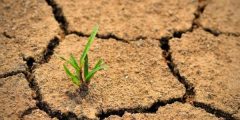Soil injection
The expansion or contraction of the soil depends on its quality, humidity, and surrounding conditions. The soil and its problems that cause its expansion or contraction are settled. To solve this problem, soil injection is one of the methods used. It reduces the water-conserving capacity of clay soil, makes it less susceptible to expansion and contraction dependent on water content and reduces soil damage.
Uses of soil injection
Soil injection is used for the following purposes:
- Grouting helps reduce soil shrinkage or expansion and thus reduces foundation damage before it begins.
- Injection is used because of its affordability, so it is considered economical and logical.
- It is beneficial in the long term, such as strengthening and strengthening the soil density.
- The injection process is simple, effective and quick with minimal cleaning required.
Soil injection methods
There are several methods for injecting soil, including the following:
Cement injection
Cement injection is done by creating a tube or multiple tubes to fill the voids between the soil particles. The size of the cement particles must be proportional to the size of the voids in the soil. Its aim is to reduce the permeability of the soil and increase its strength. It involves injecting the soil by mixing cement and water in appropriate proportions and is done with pipes and under a certain pressure.
Read also:What is pine?
Injection with chemicals
This method is used in sandy and loose soil, and this method is used to make rock blocks from this soil. This method is done by installing tubes in the layers to be treated and starting from the bottom to the top, then passing the liquid through them. This liquid has a low viscosity to allow the liquid to pass through.
Selection of soil freezing equipment depending on the injection method
The types of equipment depend on the injection method used and are as follows:
- Indirect method
It contains a primary coolant such as ammonia or carbon dioxide. This coolant removes heat from the primary coolant and consists of a solution of calcium, sodium, or magnesium chloride. It passes through pipes to cool the soil. High-density polyethylene insulating pipes are also used for pumping operations.
- Direct method
The liquid, which maintains its properties, is transported and pumped into the soil through insulated copper pipes.
- Mixed method
It is a combination of equipment in the direct and indirect method.
Time frame for the injection process
There are factors affecting the process of soil freezing after the injection process, the most important of which are the following:
Read also:The largest forest in the world- The type of material used during the injection process. For example, calcium chloride is suitable for long projects because it requires several weeks to several months. As for short projects, nitrogen is used because it takes a few days due to its low temperature and is used in emergency cases.
- The type of material used in the process of freezing soil by injection. As in the previous point, calcium chloride solution is suitable for long-term projects.
- The distance between the tubes, as the greater the distance between the tubes, the longer the freezing time
- The water content in the soil, as the higher the water content in the soil, the longer the time period for freezing due to the amount of water that needs to be frozen in the soil.









